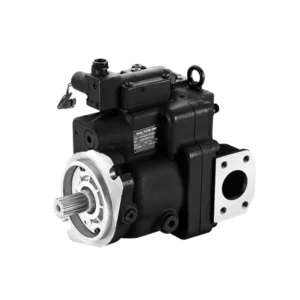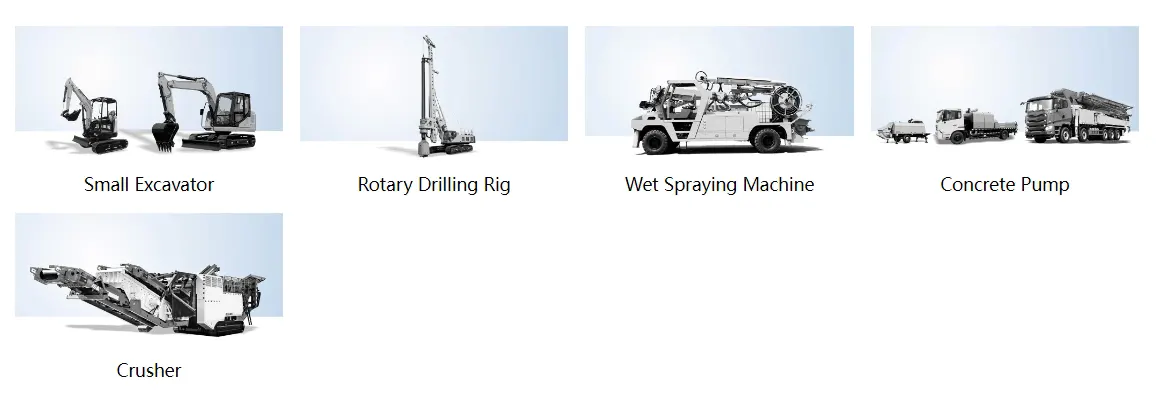HP3V Series Axial Piston Variable Displacement Hydraulic Pump
Como um dos fabricantes, fornecedores e exportadores de produtos mecânicos de cilindros hidráulicos, oferecemos cilindros hidráulicos e muitos outros produtos.
Entre em contato conosco para obter detalhes.
Correio eletrônico:sales@hydraulic-cylinders.net
Fabricante, fornecedor e exportador de cilindros hidráulicos.
HP3V Series Axial Piston Variable Displacement Hydraulic Pump

The HP3V series axial piston variable displacement hydraulic pump is a game-changer in hydraulic systems. This pump is designed with precision engineering and cutting-edge technology and delivers superior efficiency and performance, making it an indispensable component for various industrial applications. This comprehensive article will explore the key characteristics, usage methods, and maintenance guidelines for the HP3V axial piston variable displacement hydraulic pump.
The HP3V series axial piston variable displacement hydraulic pump is a powerhouse that delivers unmatched efficiency and performance in hydraulic systems. With its variable displacement technology, compact design, and quiet operation, this pump is a reliable and precise solution for various industrial applications. By following the recommended usage methods and adhering to regular maintenance practices, the HP3V series pump will continue to provide exceptional performance, contributing to the success of various hydraulic systems. Embrace the power of efficiency and performance with the HP3V series axial piston variable displacement hydraulic pump and unlock the full potential of your hydraulic system.
HP3V Series Axial Piston Variable Displacement Hydraulic Pump Key Characteristics:
- Variable Displacement Technology: The HP3V series pump has advanced variable displacement technology, allowing it to adjust the output volume based on system requirements. This feature maximizes energy efficiency, reduces heat generation, and optimizes overall system performance.
- Unparalleled Efficiency: The HP3V series pump achieves exceptional efficiency with its innovative axial piston design. It provides precise hydraulic power, ensuring smooth operation and enabling the handling of high-pressure applications with ease.
- Compact Design: The pump’s compact design optimizes space utilization in hydraulic systems. Its small footprint enables easy integration, even in tight spaces, without compromising performance or functionality.
- Quiet Operation: Noise reduction features incorporated into the HP3V series pump ensure quiet operation in diverse industrial environments. This characteristic is precious in applications that require low noise levels, promoting a comfortable and productive work environment.
HP3V Series Axial Piston Variable Displacement Hydraulic Pump Parameter:
| Size | Displacement cc/rev | Pressure bar | Rotation speed r/min | ||
| Rated | Peak | Max for self-priming*1 | Max*2 | ||
| HP3V80 | 80 | 320 | 350 | 2400 | 3000 |
| HP3V140 | 140 | 350 | 400 | 2150 | 2500 |
HP3V Series Axial Piston Variable Displacement Hydraulic Pump Advantages:
• Applied in open circuit medium and high pressure applications
• High continuous pressure
• Good self-priming properties
• High reliability
• High power to weight ratio
• Multiple control methods
• Fast response
• Low pressure pulse
HP3V Series Axial Piston Variable Displacement Hydraulic Pump Application:

Usage Method Of HP3V Series Axial Piston Variable Displacement Hydraulic Pump:
- Pump Installation: Install the HP3V series axial piston variable displacement hydraulic pump in the designated location within the hydraulic system. Refer to the manufacturer’s guidelines and specifications for proper alignment and secure attachment to the system’s structure using suitable mounting brackets or accessories.
- Hydraulic System Integration: Connect the pump to the hydraulic system using compatible hoses, fittings, and valves. Ensure all connections are secure, leak-free, and correctly tightened to guarantee optimal hydraulic performance.
- Fluid Compatibility: Verify that the hydraulic fluid used in the system is compatible with the HP3V series pump. Refer to the manufacturer’s recommendations for the appropriate fluid type, viscosity, and temperature range. Regularly monitor and maintain the hydraulic fluid to ensure proper pump operation and longevity.
- Operational Parameters: Familiarize yourself with the pump’s control options and adjust the operating parameters according to the specific requirements of the hydraulic system. Monitor and change the pump’s displacement settings to optimize performance and energy efficiency.
How To Remove Hydraulic Cylinder End Cap?
To remove the end cap of a hydraulic cylinder, follow these steps:
- Prepare for the Task:
- Ensure the hydraulic system is depressurized and disconnected.
- Clean the exterior of the cylinder to prevent debris from entering during the process.
- Place the cylinder on a stable work surface and secure it using clamps or a vise.
- Identify Retaining Mechanisms:
- Inspect the cylinder to determine the retaining mechanism used on the end cap. It could be bolts, threaded connections, snap rings, or retaining rings.
- Remove Bolts or Fasteners:
- If the end cap is secured with bolts, use an appropriate wrench or socket to loosen and remove them.
- Ensure you have suitable access to all the bolts and remove them evenly, avoiding any damage to the cylinder or end cap.
- Loosen Threaded Connections:
- For threaded connections, use a wrench or spanner to loosen the relationship between the end cap and the cylinder body.
- Apply gentle but consistent force in a counterclockwise direction to loosen the threads.
- Once loosened, continue turning the end cap by hand until it can be entirely removed.
- Remove Snap Rings or Retaining Rings:
- If the end cap is secured with snap rings or retaining rings, use snap ring pliers or retaining ring pliers to remove the rings carefully.
- Insert the pliers into the ring’s ends and squeeze the handles to compress the ring, allowing it to be pulled out of its groove.
- Take caution not to damage the cylinder or end cap during this process.
- Separate the End Cap:
- Once all retaining mechanisms are removed, gently tap the end cap with a rubber mallet or a soft-faced hammer to loosen it from the cylinder body.
- Apply even force around the circumference of the end cap to prevent it from binding or becoming stuck.
- Inspect and Clean:
- Once the end cap is removed, inspect the sealing surfaces, O-rings, and internal components for any damage or wear.
- Clean the end cap, cylinder body, and all related components using a lint-free cloth or a suitable solvent to remove any contaminants or debris.
Aptidão e capacidade da fábrica:
(1) Montagem
Temos uma plataforma de montagem de pesquisa e desenvolvimento independente de primeira classe. A oficina de produção de cilindros hidráulicos tem quatro linhas de montagem semiautomáticas de cilindros de elevação e uma linha de montagem automática de cilindros de inclinação, com uma capacidade de produção anual projetada de 1 milhão de peças. A oficina de cilindros especiais é equipada com várias especificações de um sistema de montagem de limpeza semiautomática com uma capacidade de produção anual projetada de 200.000 peças e equipada com famosos equipamentos de usinagem CNC, um centro de usinagem, um equipamento especial de processamento de cilindros de alta precisão, uma máquina de solda robotizada, uma máquina de limpeza automática, uma máquina de montagem automática de cilindros e uma linha de produção de pintura automática. O equipamento crítico existente é de mais de 300 conjuntos (conjuntos). A alocação ideal e o uso eficiente dos recursos do equipamento garantem os requisitos de precisão dos produtos e atendem às necessidades de alta qualidade dos produtos.


(2) Usinagem
A oficina de usinagem é equipada com um centro de torneamento de trilho inclinado personalizado, um centro de usinagem, uma máquina de brunimento de alta velocidade, um robô de soldagem e outros equipamentos relacionados, que podem lidar com o processamento de tubos de cilindros com diâmetro interno máximo de 400 mm e comprimento máximo de 6 metros.

(3) Soldagem

(4) Pintura e revestimento
Com linhas de revestimento de tinta à base de água automáticas de cilindros de pequeno e médio porte, para obter carregamento e descarregamento automáticos de robôs e pulverização automática, a capacidade projetada é de 4.000 peças por turno;
Também temos uma linha de produção de tinta semiautomática para cilindros grandes, acionada por uma corrente elétrica, com capacidade de projeto de 60 caixas por turno.


(5) Testes
Temos instalações de inspeção e bancos de teste de primeira classe para garantir que o desempenho do cilindro atenda aos requisitos.

We are one of the best hydraulic cylinder manufacturers. We can offer comprehensive hydraulic cylinders. We also provide corresponding caixas de câmbio agrícolas. Exportamos nossos produtos para clientes em todo o mundo e conquistamos uma boa reputação devido à qualidade superior de nossos produtos e ao serviço pós-venda. Convidamos clientes nacionais e estrangeiros a entrar em contato conosco para negociar negócios, trocar informações e cooperar conosco!
Faça um tour pela nossa fábrica de RV:
Faça um tour pela nossa fábrica de RV com o seguinte
Cilindro hidráulico Aplicação:


